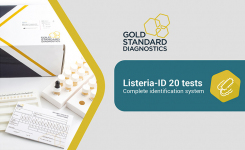Recent mishaps at laboratories that mishandled potentially dangerous biological substances and the transmission of the Ebola virus in a U.S. hospital are symptoms at bioscience facilities that two Sandia National Laboratories researchers think could be prevented by implementing the practices in a new book on biorisk management.
The 228-page “Laboratory Biorisk Management” published by CRC Press was edited by two Sandia senior managers, Ren Salerno of the Biological Sciences and Technologies Program and Jennifer Gaudioso of the International Biological and Chemical Threat Reduction Program, who have worked for years to improve safety and security at bioscience facilities worldwide
"This is the first full-length manuscript on the detailed implementation of biorisk management,” Salerno said. “Laboratory biorisk management is fundamentally a culture of rigorously assessing risks, deciding how to mitigate those risks deemed to be unacceptable and establishing mechanisms to constantly evaluate the effectiveness of the control measures.”
Salerno, Gaudioso and the other authors advocate a cultural shift in how laboratories, hospitals and other bioscience facilities approach safety and security. They say, biorisk management should:
- prioritize an intellectually sound, evidence-based decision-making process using substantive risk assessments to evaluate a facility’s risk based on the unique operating environment.
- require implementation of mitigation measures according to the risks of specific activities, experiments or projects.
- constantly assess performance.
- emphasize more meaningful roles and responsibilities for all personnel within a facility.
- assign ultimate responsibility for safety or security performance to top management.
- be scalable from the smallest hospital or clinical lab to the largest research institution.
About a dozen other Sandia experts in the field paired up with their international counterparts to develop and advance a practical set of concepts relevant and able to be implemented by labs worldwide, Gaudioso said.
In addition to explaining biorisk management and providing a model, the book includes chapters on risk assessments, facility design and controls, training, operations and maintenance, how to evaluate biorisk management performance, communications issues, case studies and future directions and challenges for biorisk management. read more....
For book purchase or ebook rental visit www.crcpress.com/Laboratory-Biorisk-Management-Biosafety-and-Biosecurity/Salerno-Gaudioso/9781466593640

















